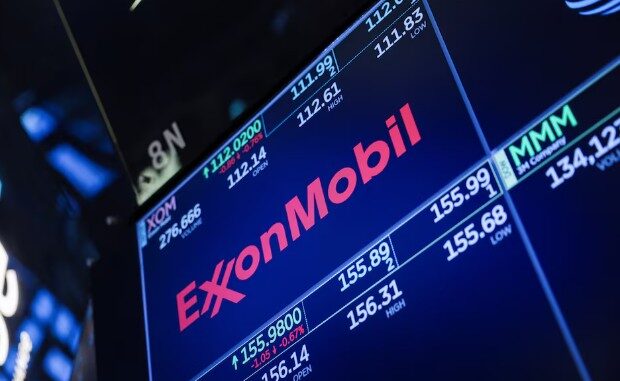
In a recent address at a conference in London, ExxonMobil CEO Darren Woods provided insights into the future of the global oil market, painting a picture of potential supply constraints ahead. As the head of one of the world’s largest energy companies, Woods’ comments carry significant weight for the industry, highlighting a shift from current short-term oversupply to tighter conditions in the coming years. This perspective comes amid ongoing debates about energy transitions, investment strategies, and the role of fossil fuels in meeting rising global demand.
Woods emphasized that the oil market’s current oversupply is likely temporary, driven by factors like increased production from non-OPEC sources and fluctuating economic conditions.
However, he warned that without sustained investments in unconventional oil and gas assets—such as shale formations—the industry could face significant challenges. “He said that without investments in unconventional oil and gas fields, the annual decline rate could be as high as 15% each year,” according to reports from the event.
Got Questions on investing in oil and gas? Or do you have a Tax Burden in 2025?
This decline rate refers to the natural depletion of existing oil fields, where production drops unless offset by new developments or enhanced recovery techniques. Delving deeper, Woods pointed to demand-side pressures as a key driver of future tightness. He noted that “demand from emerging economies [is] set to make meeting global energy demand more challenging in the medium-longer term.”
Emerging markets, particularly in Asia and Africa, are experiencing rapid industrialization and population growth, which are expected to boost energy consumption. This contrasts with slower demand growth in developed regions, where electrification and efficiency improvements are tempering oil use. Woods’ view aligns with broader industry forecasts, such as those from the International Energy Agency, which project global oil demand continuing to rise through at least 2030 before potentially plateauing.ExxonMobil, under Woods’ leadership, has been positioning itself to capitalize on these dynamics. The company has ramped up investments in high-growth areas like the Permian Basin in the U.S. and offshore projects in Guyana, aiming to maintain production levels and capture market share. Woods’ statements underscore Exxon’s strategy of balancing traditional oil and gas with lower-carbon initiatives, while advocating for policies that support ongoing fossil fuel development.
Implications for Investors in Oil and Gas
For investors eyeing the oil and gas sector, Woods’ outlook presents a mix of opportunities and risks that could shape portfolio decisions in the medium to long term.On the positive side, a tighter oil market typically translates to higher crude prices, which can boost revenues and profitability for upstream producers like ExxonMobil, Chevron, and Occidental Petroleum. If supply declines at the 15% annual rate Woods mentioned without adequate reinvestment, benchmark prices—such as Brent crude—could surge, potentially exceeding $100 per barrel in scenarios of geopolitical disruptions or accelerated demand growth.
This would benefit integrated majors with diversified operations, as refining and petrochemical margins often improve in high-price environments. Investors in exchange-traded funds (ETFs) like the Energy Select Sector SPDR Fund (XLE) or individual stocks could see capital appreciation, especially if companies maintain cost discipline and return cash to shareholders through dividends and buybacks. Exxon, for instance, has a strong track record of dividend growth, making it attractive for income-focused portfolios.
However, the emphasis on “further investments in unconventional oil and gas assets” highlights potential pitfalls.
Capital-intensive projects require billions in upfront spending, and returns depend on stable regulatory environments and access to financing. In a world shifting toward renewables, investors face ESG (Environmental, Social, and Governance) pressures; funds divesting from fossil fuels could limit capital availability, forcing companies to rely more on internal cash flows. If investments lag—due to policy uncertainty, such as stricter emissions regulations or carbon taxes—the resulting supply squeeze might lead to volatility, with boom-and-bust cycles amplifying risks for smaller explorers and service providers like Halliburton or Schlumberger.
Midstream and downstream segments, including pipelines and refineries, might experience mixed effects. Tighter supplies could increase transportation demand, benefiting companies like Kinder Morgan, but higher input costs might squeeze refining margins if end-user prices don’t rise proportionally.
Overall, Woods’ comments suggest a bullish case for oil and gas in the 2030s, provided the industry adapts. Investors should monitor key indicators like OPEC+ production decisions, global GDP growth in emerging markets, and technological advancements in extraction efficiency. Diversifying into energy transition plays—such as carbon capture or biofuels, areas where Exxon is investing—could hedge against longer-term downside risks.
As the energy landscape evolves, statements like these from industry leaders remind us that oil’s role isn’t fading anytime soon. For those invested in the sector, the medium to long term could offer rewarding prospects, but only with careful navigation of the supply-demand tightrope. Stay tuned to Energy News Beat for more updates on how these trends unfold.
Got Questions on investing in oil and gas? Or do you have a Tax Burden in 2025?
Crude Oil, LNG, Jet Fuel price quote
ENB Top News
ENB
Energy Dashboard
ENB Podcast
ENB Substack






Be the first to comment